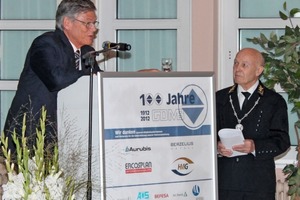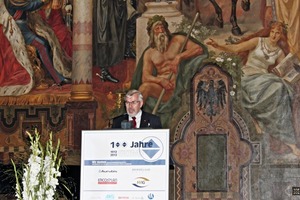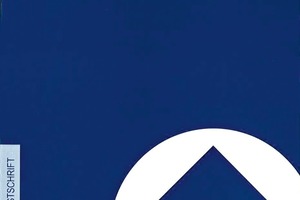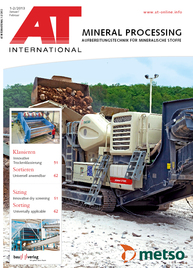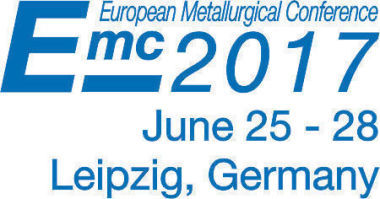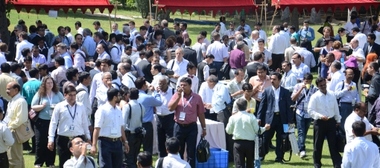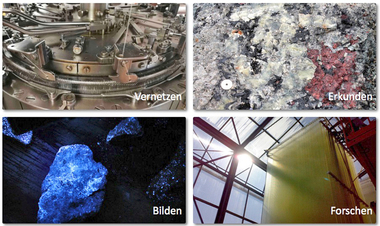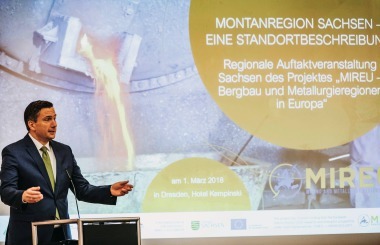100 years of GDMB
The GDMB (Gesellschaft Deutscher Metallhütten- und Bergleute – Society of German Metal Workers and Miners) was founded in Berlin in 1912. Its main objective was to support the scientific-technical exchange of ideas and to promote communication between experts. Knowledge and new developments was to be passed on and discussed within the society. Not least the GDMB wanted and wants to be a mediator between practice and theory, between mining and the corresponding research institutions. This was its main role, in particular, also during the heyday of German mining in the middle of the 20th century.
The 100th anniversary was celebrated jointly with the general meeting and the 55th Annual Conference of the GDMB History Committee within the framework of a ceremony that took place in the imperial city of Goslar, on 6 September 2012. Prof. Hans Jacobi (Fig. 1), the President of the GDMB, which was renamed the GDMB Society for Mining, Metallurgy, Resource and Environmental Technology on 19 January 1996, welcomed members and guests. After the welcoming speech, congratulations followed from representatives from politics, industry, science and associations. Then, Dipl.-Ing. Peter Willbrandt, CEO of Aurubis AG, underlined that a 100th anniversary is rather a rarity and that he knows the GDMB well and holds it in high regard.
Following this Prof. Heinz Walter Wild (Fig. 1) gave a lecture on “Tradition and progress - 100 years of GDMB” describing the development of the organization. One of the most important tasks was to publish their own journal. In 1912 the journal Metallurgie (Metallurgy), which was founded in 1904, became the periodical Metall und Erz (Metal and Ore) and the organ of the GDMB. In 1924 the Georg Agricola Commemorative Medal was presented during the general meeting in Freiberg in memory of the founder of geo-sciences and the leading scholar in the field of ore mining. Today this is still the highest mining science award. For the first time it went to the German-Swiss metal chemist and entrepreneur Dr.-Ing. Ferdinand Heberlein. The years during World War II certainly had far-reaching consequences and also as a result, the Berlin office was completely destroyed in 1940. Fortunately, the library had previously been transferred to the Freiberg Mining AcademyTechnical University.
After the end of the war, the GDMB was re-founded in Clausthal-Zellerfeld. The first general meeting took place there in 1947. In 1968 the new journal for ore mining and metalworks ‘Erzmetall’ (Metallurgy World) was published. In the second half of the 20th century the boundary conditions changed, in part drastically. This was due to a downward trend of German mining, the partition of Germany and increasing globalization. Consequently, the exchange of information and the formation of networks became the focus of attention. In 1992 the GDMB Informationsgesellschaft mbH was founded. In addition, several committees of experts were established, which were able to focus on one field of topics, among them district groups to take advantage of the local proximity. To take into account the latest developments, a committee of experts for disposal management and the working group AK 2015 were established to explore the future trends of development of the GDMB up to the year 2015.
After the ceremonial address, the participants met for a soirée in the imperial palace. There Dipl.-Ing. Kurt Ehrke (Fig. 2) was awarded the Georg Agricola Commemorative Medal and Dr. Reimund Westphal was honoured with the GDMB Medal of Thanks.
Further information as regards the history of the GDMB can be found in the festschrift (Fig. 3) published by Herbert Aly, Prof. Rainer Slotta, Prof. Heinz Walter Wild and Jürgen Zuchowski.

